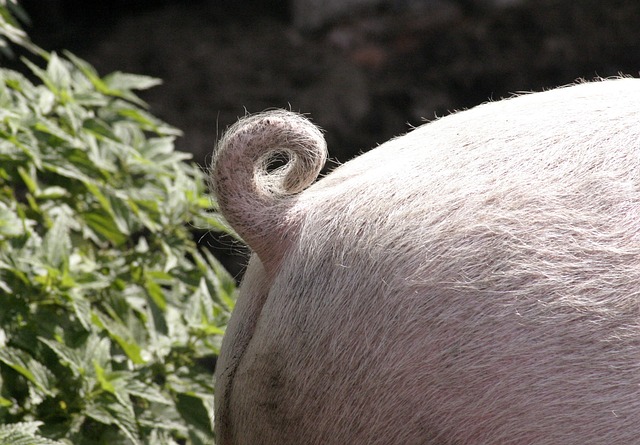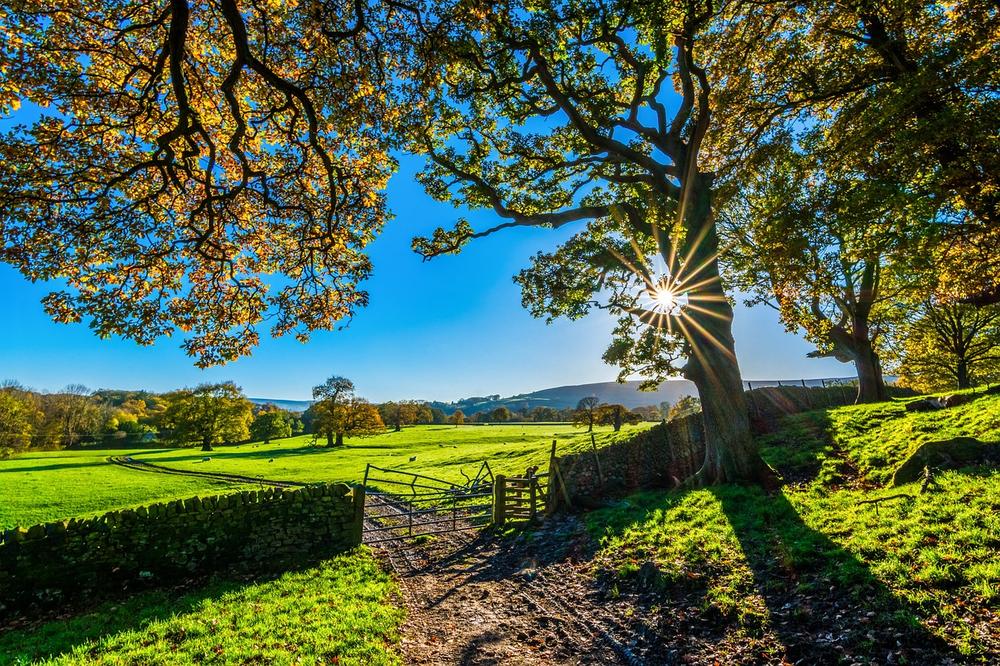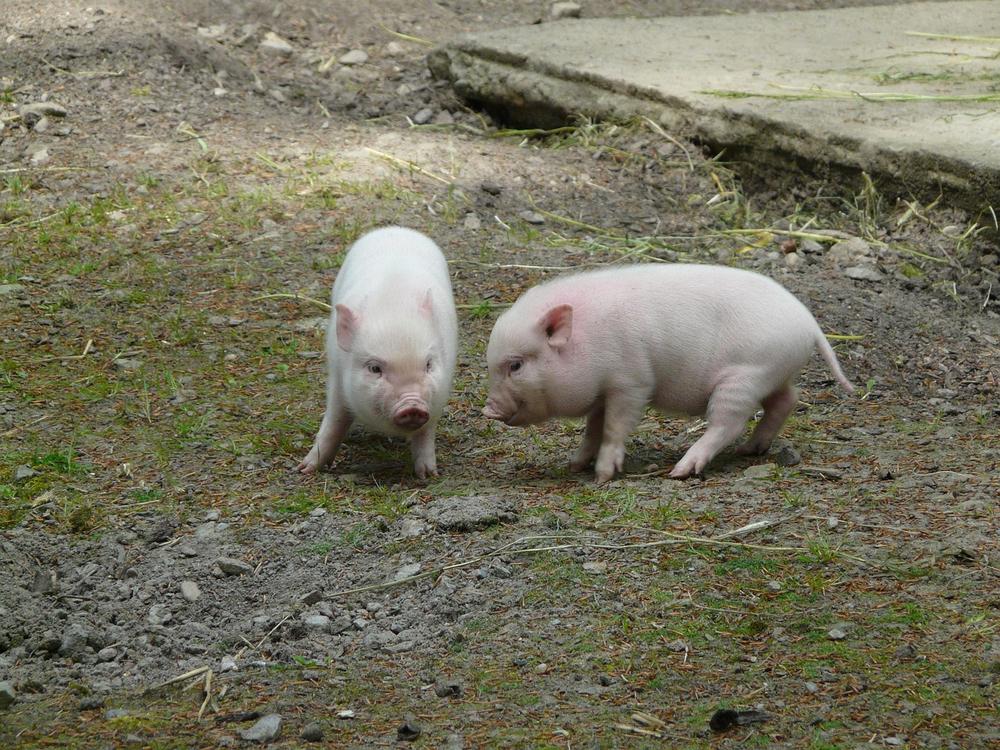Why Do Pigs Have Curly Tails? This Is the Actual Answer

Curly tails on pigs:
Why the twist? 🐷
Bet you've wondered about it, spun it around in your mind.
Go on, admit it, I know it's got you scratching your head.
With those adorable snouts and floppy ears, why did Mother Nature decide to throw in a loop-de-loop?
Well, buckle up, because today we're diving deep into the world of porcine perplexity.
Ready to unravel the mystery behind those curly cues?
Let's get started.
Pig's Tails: Unraveling the Purpose and Curly Mystery
Pig's tails serve important functions, providing balance and reducing penmate bites. They indicate lower stress levels and better health, act as natural bug swatters, and help pigs stand out. Curly tails also play a role in pig fights and express happiness. Their purposes are fascinating to discover.
You might ask yourself why pigs have curly tails.
Well, let me explain this mystery to you in a simple way.
Curly tails in pigs serve many important functions.
They help pigs keep their balance on difficult terrain or slippery surfaces.
It's like having a built-in GPS system to keep them steady on their feet.
But that's not all.
Curly tails also protect pigs from painful bites from their penmates. 😊
Can you imagine getting your tail bitten?
Ouch.
Luckily, pigs have evolved these curly tails as a defense mechanism against those mean nibbles.
Some farmers, though, resort to tail docking to prevent tail biting.
But here's the important thing:
Curly tails actually indicate lower stress levels and in essence better health in pigs. So, it's best to let pigs keep their curly tails so they can live happily and healthily.
Curly tails aren't just practical; they're also useful for swatting away annoying bugs.
That's right!
Pigs use their curly tails as natural bug swatters.
Talk about multitasking.
And let's not forget about style.

Curly tails make pigs stand out from other animals.
They're like fancy accessories for pigs, adding uniqueness to their already adorable appearance.
Here's a fun fact.
Did you know that curly tails play a role in pig fights?
Yep, pigs with curly tails are associated with success in battles.
But hold on.
When pigs are domesticated and well taken care of, they pose no danger to anyone.
So, no need to worry about piggy brawls.
Lastly, curly tails are known for expressing pig happiness, satisfaction, and enthusiasm.
It's similar to how dogs wag their tails when they're excited.
However, you should consider other factors besides tail wagging to accurately assess a pig's mood.
Tails don't tell the whole story, but they do provide some insight.
So now you know!
Curly tails in pigs serve various purposes, from balance to defense, bug swatting to pig happiness.
It's just another fascinating aspect of these wonderful creatures that we love.
And finally, if you're still curious about the incredible senses that pigs rely on, I highly recommend checking out my guide, What Senses Do Pigs Rely On.
Discover the fascinating world of pig perception and learn just how incredibly attuned these creatures are to their environment.
You'll be amazed at what you uncover!.
Pig's Tail: Natural Curl or Born With It?
Curly Tails of Pigs:
Are they a natural trait or acquired from birth?
Quite an intriguing question, wouldn't you agree?
Have you ever pondered the reason behind pigs having those adorable curly tails?
Well, allow me to enlighten you on this matter!
When piglets are just born, their tails are initially straight.
But within a span of a few days, something truly magical occurs—their tails gradually curl up, transforming into the curly ones we find so endearing.
So, what exactly causes this transformation in pigs' tails?
While genetics certainly play a role, it appears that there are additional external factors involved as well.
You see, the curly tails of pigs serve various purposes simultaneously.
They act as a natural shield, providing protection against physical injuries.
Moreover, these tails help repel pests like parasites, effectively keeping those bothersome little critters at bay.
However, here's where it gets even more fascinating:
The shape of a pig's tail can also indicate its overall health and well-being.

If a pig's tail begins to straighten out, it could be an indication of stress or a potential infestation of worms.
Remarkably enough, it functions as a personal health monitor for them!
Now, let's delve into how pigs ended up acquiring curly tails in the first place.
It is believed that these curly tails evolved through selective breeding and domestication, predominantly in Chinese pig breeds.
Ah, genetics, such a captivating subject!
There is some debate regarding the exact origin of this curly characteristic.
Certain theories propose that it arose accidentally during pig fighting, while others suggest intentional breeding for either aesthetic appeal or practical purposes such as fighting—quite the embodiment of curly style!
Regardless of the true reason behind curly tails, they offer valuable insights into a pig's physical condition.
To minimize injuries and infections related to their tails, practices like tooth-clipping and tail-docking are frequently implemented. Better to be safe than sorry, wouldn't you agree?
So, the next time you encounter a pig with a curly tail, remember that it's not merely a cute feature—it serves as an intriguing indicator of everything from pests to potential ailments. Nature indeed works in mysterious ways, doesn't it?
Do All Pigs Have Curly Tails?
Not all pigs have curly tails, contrary to popular belief.
Let's explore this topic further with a list of key points:
- While many pig breeds have curly tails, exceptions exist.
- Heritage pig breeds like Gloucestershire Old Spot often have straight tails.
- Straight tails are more prone to injuries from grabbing or biting.
- Ear tagging or tattooing pigs for identification is legal and common.
- Expenses in pig keeping include feeding, water, housing, medications, treatments, and licensing fees.
- Docking piglet tails can prevent tail biting and infections within herds.
- Presence or absence of tail curl varies depending on the breed.
- Pigs are vocal animals that use noises to convey emotions.
- Breeding pigs specifically for curly tails is unnecessary.
- Embrace the natural characteristics of the breed you already have.
Understanding the nuances of pigs' tails will help you better care for these delightful creatures.
And here's what you may find surprising about pigs' tails...
Do Mini Pigs Have Curly Tails?
Potbellied and Kunekune pigs, like the cute little ones, have different types of curly tails.
Some have tails that curl, others have straight tails.
Regulations for keeping pet pigs aren't the same everywhere, you know.
So, before you go getting ideas about adopting one, ensure you talk to the local authorities. They'll fill you in on all the licensing requirements for having a piggy friend in your area.
And don't forget, while pigs usually live for 15 to 20 years, those fancy mini ones might not have as long a lifespan due to selective breeding.
But hey, with proper care, they can actually stick around longer than you'd expect.
Now, whether they come with a curly or straight tail, these tiny piggies - mainly Potbellied or Kunekune breeds - can really be great companions.
If you're seriously considering bringing one home, there are plenty of products out there that can make life easier for pig owners.
You've got your specialized pig food, stainless steel bowls, cozy blankets, handy harnesses, comfy crates, useful litterboxes, shavings for bedding, and even some solutions for getting rid of any funky smells.
Lastly, it's good to know that miniature pigs aren't their own unique breed, per se.
Instead, they're bred from either pot-bellied pigs or kunekune pigs, and you can find them in sizes ranging from 60 pounds up to a whopping 300 pounds.
And by the way, have you ever wondered how pig breeders are able to introduce the characteristic of a curly tail?
Keep reading to discover the fascinating methods behind diversifying tail shapes in different pig breeds and the implications it can have on their health...
Chart of Pig Breeds With Straight or Curly Tails and Their Origins
Do pigs with curly tails always have Chinese origins?
Well, not exactly. You might think that all curly-tailed pigs come from China, but that's not entirely true.
Some pig breeds naturally have curly tails, while others acquire the trait through crossbreeding.
Take the Large White Pig as an example. Despite being developed in the UK, these pigs proudly showcase their curly tails.
It just proves that curly tails aren't exclusive to China.
But here's where it gets even more intriguing.
Even pig breeds originally from China, like the Meishan pig, don't always have curly tails.
Some individuals within these breeds actually sport straight tails. Fascinating, right?
And did you know that a pig's tail shape can reveal important health information?
Generally, a straight tail might indicate poor health or illness in pigs.
So next time you're around these oinkers, keep an eye on those tails!
Now, let's talk about the role of pig breeders in shaping tail characteristics. They play a significant part in creating those little twists we associate with curly tails.
Through strategic crossbreeding efforts, they introduce diversity among tail shapes across different pig breeds.
So, whether it's genetics or crossbreeding, the reason behind why pigs have curly tails is far more interesting and complex than you may have thought.
But what about discovering more intriguing pig breeds? If you're curious to learn about the heritage and characteristics of the mangalica pig, then you should check out my article on What Is a Mangalica Pig.
There, you'll find all the fascinating details about this unique breed.
Why Do Wild Pigs Have Straight Tails?
Wild pigs generally have straight tails due to their environment.
In the wild, pigs face rough terrains and dense vegetation. Curly tails can be a disadvantage in these situations. Although some Chinese breeds have curly tails, most wild pigs possess straight tails.
Even feral pigs descended from domesticated breeds often maintain this characteristic.
While domesticated pigs may lose their curly tails when they become feral.
So, the straight tail is a common trait among wild pig species.
Pig Tails: From Curls to Straight: Unveiled
Key Takeaways:
- Curly tails serve multiple purposes, including protection against injuries and pests.
- Straightening of a pig's tail may indicate stress or worm infestation.
- Curly tails evolved through domestication and selective breeding.
- Tail docking is used to minimize injuries and infections in pig herds.
- Not all pig breeds have curly tails; the presence or absence of curl is breed-specific.
- Laws and licensing requirements for pet pigs vary by country.
- Mini pigs may have shorter lifespans, but with proper care, they can live longer.
- Various products are useful for pig owners, such as food, bowls, blankets, etc.
- Curly tails can be introduced through crossbreeding.
- Wild pigs typically have straight tails, while domesticated pigs may lose curl when they become feral.
And that's all for today folks.
If you wish to read more of my useful articles, I recommend you check out some of these: Why Do Pigs Oink, Pigs Smiling, Pig Facts Sense of Smell, Pigs With Tusks, and Mirror Self-Recognition Ability of Pigs
Until next time,
-Chris Campbell